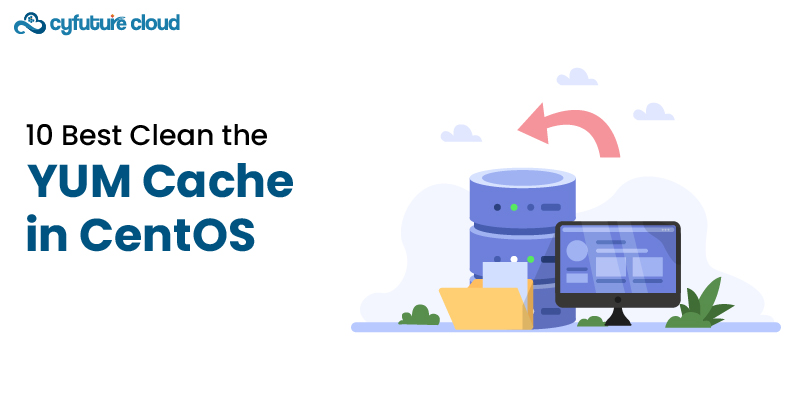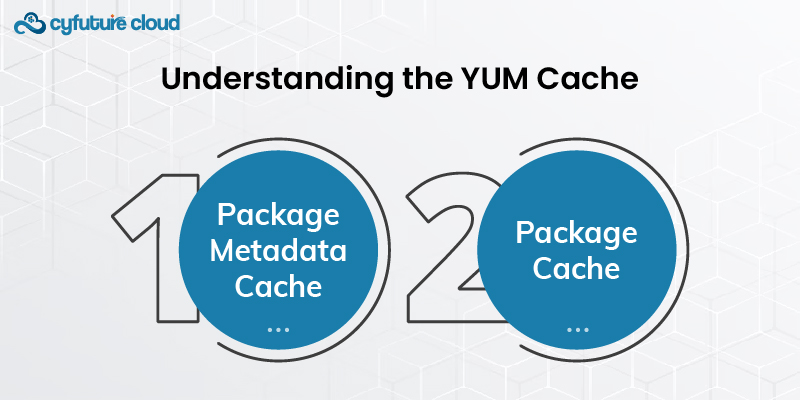 Server
Colocation
Server
Colocation
 CDN
Network
CDN
Network
 Linux Cloud
Hosting
Linux Cloud
Hosting
 VMware Public
Cloud
VMware Public
Cloud
 Multi-Cloud
Hosting
Multi-Cloud
Hosting
 Cloud
Server Hosting
Cloud
Server Hosting
 Kubernetes
Kubernetes
 API Gateway
API Gateway


For CentOS and several others in RHEL (Red Hat Enterprise Linux) family, YUM is the central component which serves as the package manager. It takes care of the configuration of software on the system by installing, updating, and removing applications. If you perform yum command to install or upgrade packages through it, YUM stores metadata and packages cache to improve its performance and lower down the bandwidth usage.
Nevertheless, over time, caches in the YUM will grow up targets that are outdated or unnecessary files which can be difficult to manage and cause administrative problems. This will be useful when you have an YUM cache and it is highly recommended to clean it regularly, specially after doing major system updates or before executing new installation or update.
The YUM cache consists of two main components:

Package Metadata Cache: This cache memoizes the metadata regarding the packages that are available in the pool. This metadata contains package names, versions, and dependencies aside from other information. It is YUM which utilizes it, and hence, if there is any issue with YUM, the repos will be update or need to be updated.
Package Cache: This is the cache where versions of the desired package archive files are stored (RPMs). These files do not need to be downloaded again if they are required in the future. This is a space-saving tactic and time-saving strategy, but also too much disk space is needed if too many are not been cleaned regularly.

There are several methods to clean the YUM cache in CentOS, depending on your specific requirements. Here are the most common approaches:
If you only want to clear the package cache (downloaded RPM files), you can use the following command:
sudo yum clean packages
This command removes all cached package files from the system, but it leaves the package metadata cache intact.
If you want to clear the package metadata cache (information about available packages), you can use the following command:
sudo yum clean metadata
This command removes the cached metadata files, forcing YUM to download fresh metadata the next time it runs.
To clean both the package cache and the metadata cache, you can use the following command:
sudo yum clean all
This command removes all cached data, including downloaded packages and metadata files.
In some cases, you may want to not only clean the caches but also expire them, forcing YUM to download fresh copies of everything the next time it runs. You can achieve this with the following command:
sudo yum clean expire-cache
This command cleans all caches and marks them as expired, so YUM will retrieve fresh data on the next run.
The yum clean command provides a few additional options that can be useful in certain situations:
sudo yum clean headers: Libraries files cached (package dependency information) are removed.
sudo yum clean dbcache: Shows the listing of undo partitions on working directories of the YUM database cache files.
sudo yum clean rpmdb: Reconstruct the RPM database, which is helpful when it even suffers the data corruption.
Both of the solutions (clearing the YUM cache and knowing their implications) also have the potential to free up disk space and overcome issues of potential failure. In order not to overestimate, it is still essential to use these solutions properly. Hereby present some suggestions concerning the effective way of dealing with your problem:
Clean the package cache regularly, especially after major system updates or before performing a new installation or update.
Clean the metadata cache less frequently, as it can slow down YUM operations by forcing it to download fresh metadata every time.
Avoid cleaning caches unnecessarily, as it can increase network traffic and slow down package management operations.
To persist with this approach, try writing cron job or script if you need to replicate the cache cleaning process regularly.
Make sure to check update clean the command yum output that it ran success and do not run in to errors.
The location of the YUM cache on the CentOS server can be easily cleared, which will free up disk space and allow to resolve common package management operations problems. By realizing the different components of YUM cache and the wide range of yum clean commands being provided, you can control efficiently the package management on your system and the cache to be always up-to-date which contribute to getting rid of any unnecessary cache packages.

Let’s talk about the future, and make it happen!
By continuing to use and navigate this website, you are agreeing to the use of cookies.
Find out more


